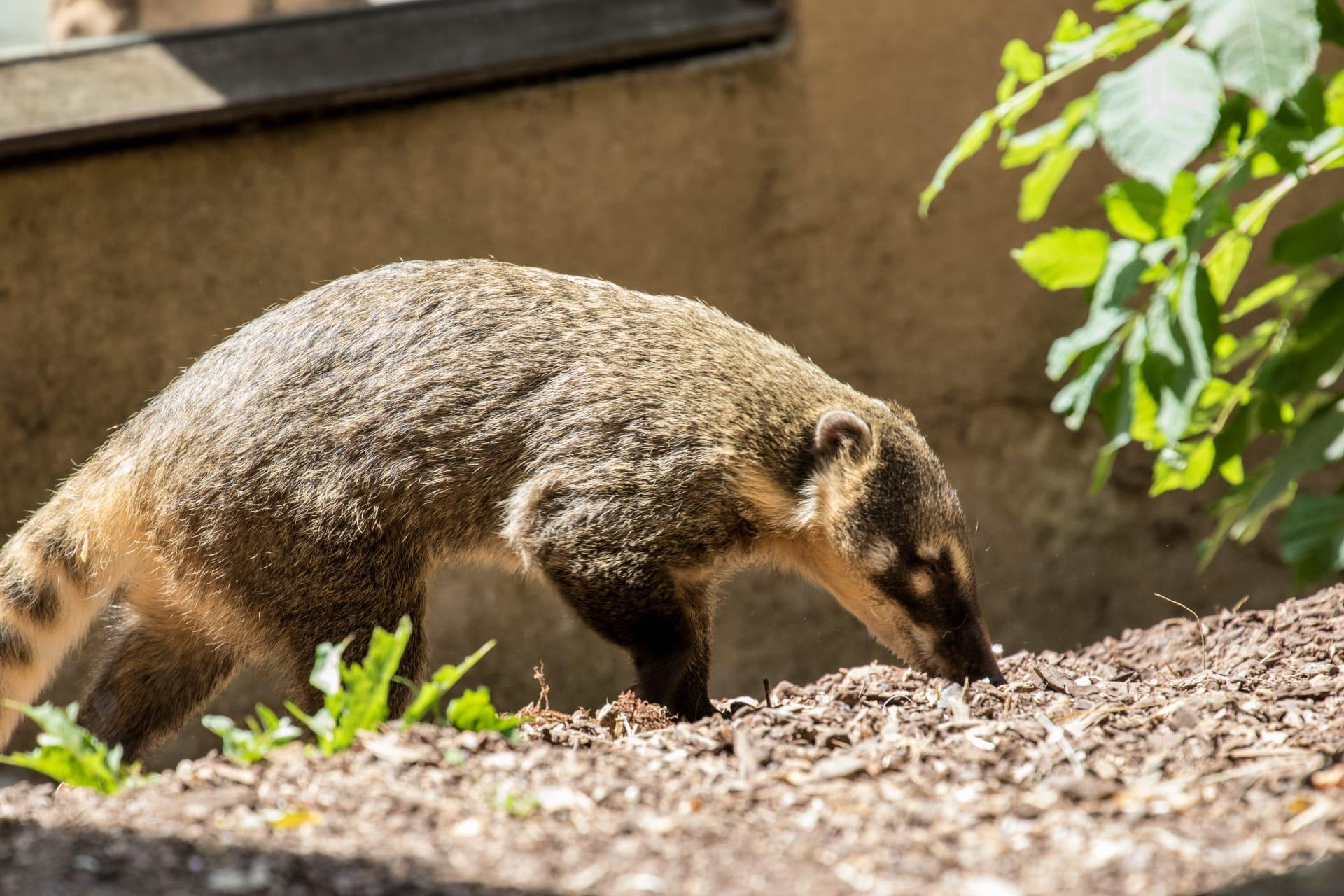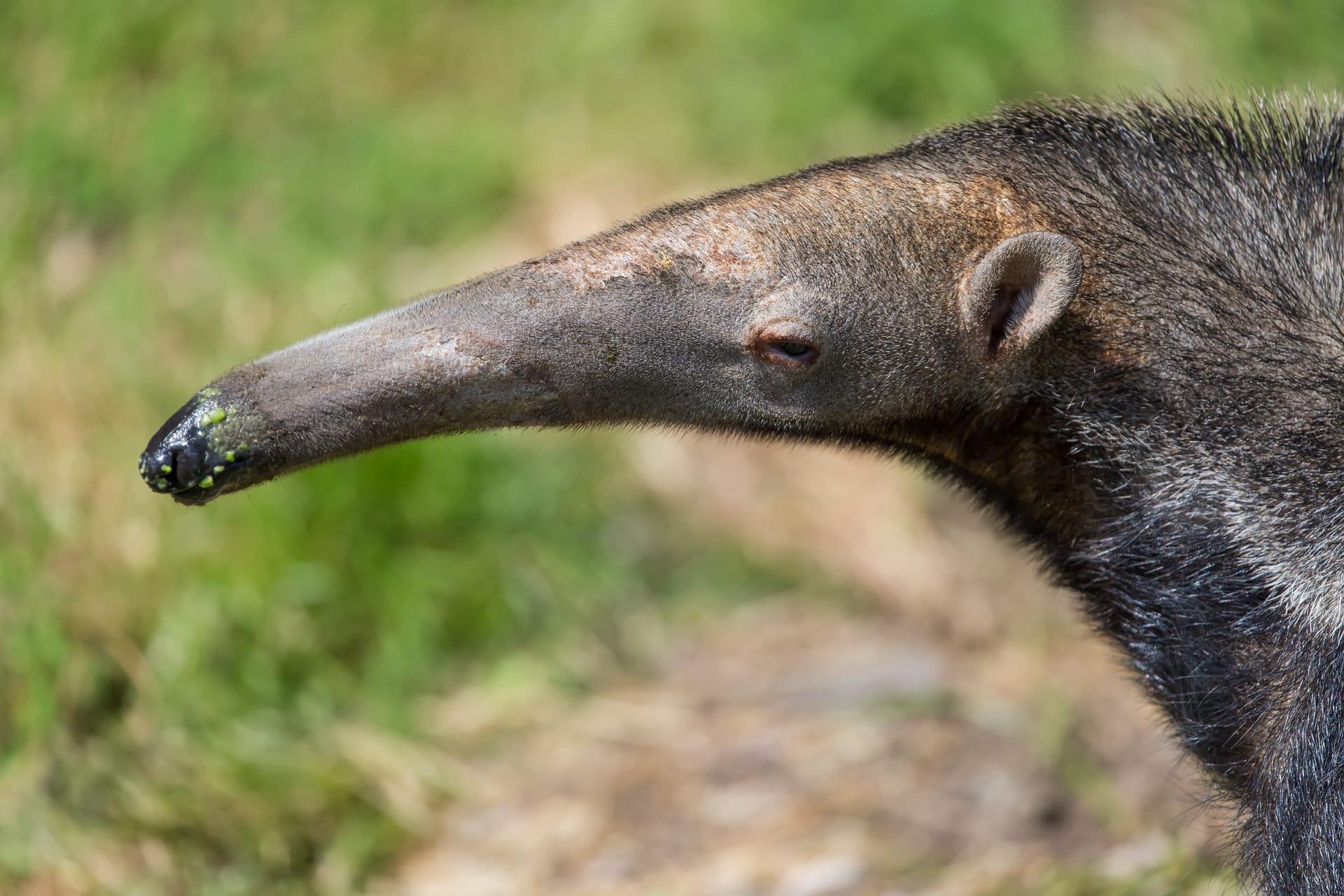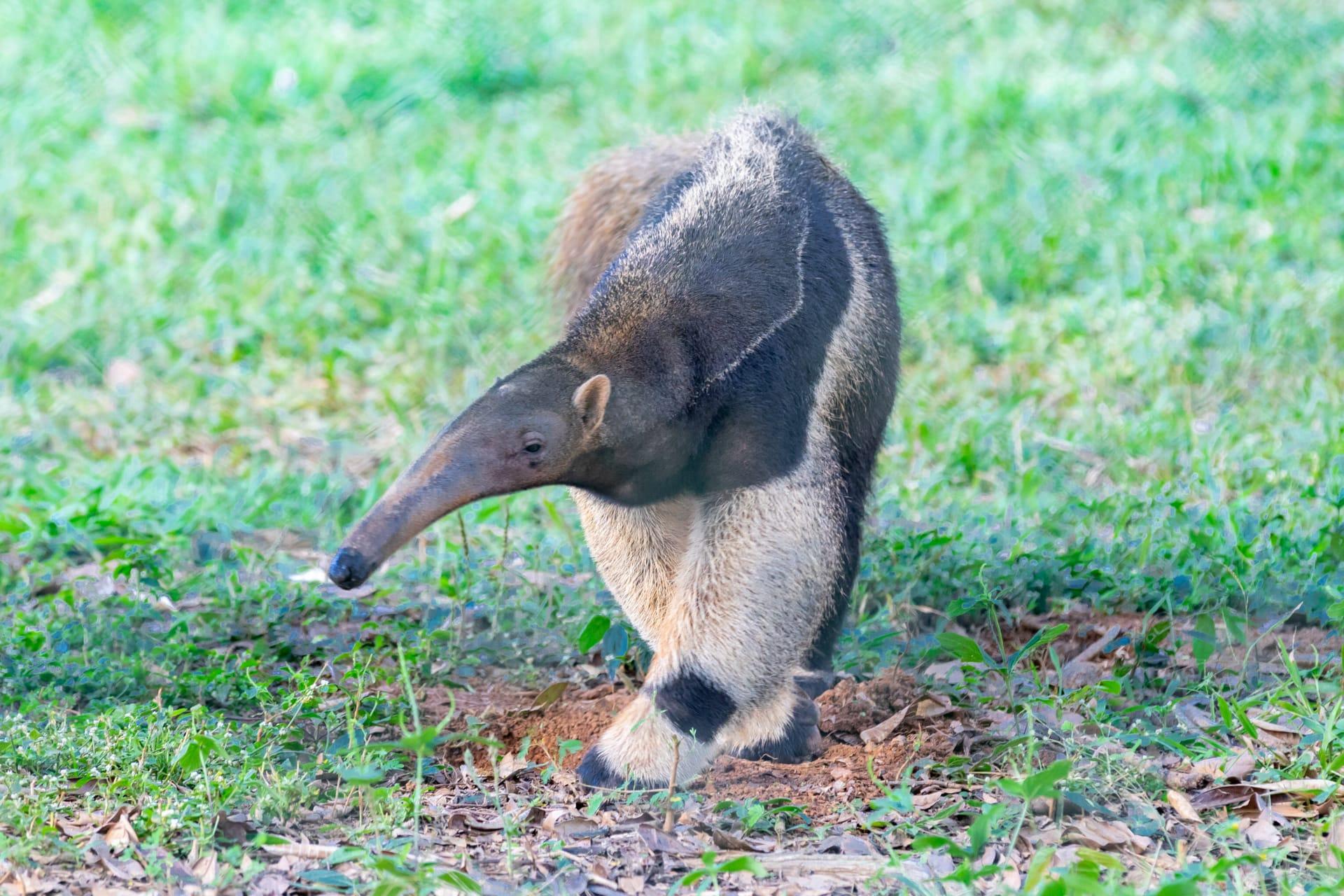1
Anteaters, known for their distinctive snouts, have a sense of smell that's 40 times more powerful than that of humans. This incredible olfactory ability enables them to detect ants and termites hidden deep within mounds or trees. Their noses are equipped with finely-tuned sensors that can pick up the faintest of scent trails, guiding them precisely to their next meal.
The tongue of an anteater is not only long, measuring up to 2 feet (60 cm), but it's also coated with a sticky saliva. This specialized tongue can flick in and out up to 160 times per minute, allowing anteaters to rapidly collect thousands of ants or termites. This rapid-fire method is essential as ants can bite, so anteaters prefer to spend as little time as possible at a feeding site.

2
Anteaters have a specialized diet, primarily feeding on ants and termites. However, despite their name, they consume only a small percentage of an ant colony, ensuring that the colony remains viable and they can return to feed again. This selective feeding strategy shows a remarkable balance with their ecosystem, emphasizing sustainability over immediate gratification.
These unique creatures have no teeth. Instead, their stomachs grind the insects with the help of small amounts of sand and dirt they ingest along with their food. This unusual digestive process is efficient, allowing anteaters to extract maximum nutrients from their tiny prey without the need for mastication.

3
Giant anteaters, the largest of their kind, are capable of fending off predators like jaguars and pumas. This might seem surprising given their peaceful nature, but they possess powerful forelimbs and sharp claws, primarily used for digging, which can be formidable weapons. In a defensive stance, an anteater can deliver a forceful swipe capable of deterring even these apex predators.
Despite their name and diet, anteaters do not destroy anthills or termite mounds. They use their claws to create small openings, then extend their tongues to lap up the insects inside. This method ensures the structure of the anthills and termite mounds remains largely intact, allowing the insect colonies to repair and survive.

4
Anteaters exhibit a solitary lifestyle, with minimal interaction outside mating. They communicate through a variety of sounds like snorts, huffs, and barks for different purposes – from warding off other anteaters to signaling distress. This self-reliant nature highlights their adaptation to a life of solitary foraging and minimal competition.
Their low metabolic rate, among the lowest in mammals, means anteaters move slowly and conserve energy. This adaptation is crucial for their survival, as their insect-based diet provides relatively low caloric intake. This lifestyle helps them thrive in their habitats without the need for high-energy activities.

5
Anteaters are excellent swimmers, using a doggy-paddle style and extending their long snouts above the water. This skill not only aids in crossing rivers and streams in their habitats but also in escaping predators. Their swimming abilities are a testament to their adaptability in various environments.
Baby anteaters, or pups, are often seen riding on their mother's backs for up to a year. This not only provides safety from predators but also serves as a way for the pups to learn foraging skills and adapt to their environment. The bond between mother and pup is strong, showcasing the nurturing aspect of these seemingly solitary creatures.